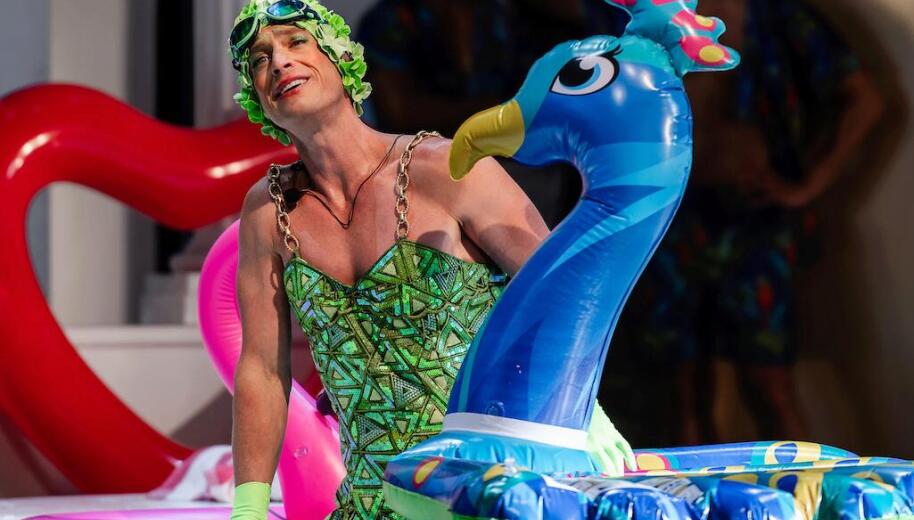
***
Garsington’s updating and reworking of Jean-Philippe Rameau’s comedy dance opera Platée solves the Platée problem; it definitely needs something to lift it from far too cruel and nasty a tale for contemporary audiences. The story revolves around an ugly and deluded swamp nymph, Platée, tricked into thinking the philandering god Jupiter has fallen for her and wants her to be his bride. It is just a trick to get revenge on the goddess Juno for her endless jealousy. She will think Jupiter has indeed found a replacement, only to be taught a lesson when it is revealed it is the ridiculous Platée, so of course the great god is not being unfaithful. Angry and dejected Platée goes back to the swamp with everyone laughing at her. Only, we don’t. We actually think the gods and their lackeys are revolting and rather wish the nymph could have, say, invented some horrible disease (associated with his sexual antics) to give Jupiter.
It is a remarkably thin (and short plot) with large amounts of ballet music. How to fill the time and space, and make a rather unfunny story, witty and entertaining to a modern audience? The answer from director Louise Muller and designer Christopher Oram is to turn this into a TV fly on the wall dating show, like Love Island. When Juno flounces off in a jealous rage, the producers, Olympus TV, must think of a way of keeping audiences interested, and ultimately reunite their literally golden, ratings-grabbing couple. So, queue a pool side set, TV studio backdrop, dressing rooms, lots of comings and goings by the army of production staff (and who ever knows what they all do?) and videos that I am informed are redolent of what they have on the television shows. It all has a faux Romano-Greek theme and actress/dancers and a couple of muscly blokes, to do the dancing (disco, hip hop sort of stuff) in those ballet interludes. It is all very jolly japes and generally races along.

To add to the weirdness of the whole thing the female nymph is played by a chap, tenor Samuel Boden, who threw himself, and even hand-stood, into the role. That cross-dressing aspect added another frisson of contemporary fad to the show. Vocally it could have been stronger although there was pathos and, thanks to our contemporary sensibilities, he did evoke our empathy. Were we supposed to? Who knows.
In a touch of Cosi fan tutte/ Marriage of Figaro plotting to trick the lovers, but without anything of Mozart’s charm and genius, the two plotters are well sung by Henry Waddington, as both Chitheron and a Satyr, and Robert Murray, as both Thespis and Mercury, with support from Jonathan McGovern as the third exec of the TV company. I found some of Murray’s overzealous antics tiresome at times, but this may well have been the intention, as he jumped and gyrated and flounced around the set.
The show’s star-named couple are not stunningly big roles, particularly Juno but Annabel Kennedy was suitably fiery while a brash bass-baritone Ossian Huskinson sang gloriously and played the chief god as a swaggering rather spivvy flashy chav. The crowd-pleasing arias, literally and in terms of the production were from Mireille Asselin as La Folie, playing a cross between a female Pete Tong and a glittering glamour puss. There was also some fine singing from Holly Teague as Clarine. The chorus joined in the fun and silliness with gusto and their main, pre-wedding choral offering was exquisite.
Movement director Rebecca Howell created some imaginative and highly entertaining choreography. The show may have benefitted from a few less bits of nonsense, such as grabbing chunks of wedding cake, but scenes such as the stylised movement of the wedding congregation and the dancers performing alternative ballet to baroque music were masterfully designed and performed.
The music was just delightful with the English Concert conducted by Paul Agnew, dressed in an Olympus TV T-shirt, taking the conceit of the production company into the pit.
At Garsington until June 30.
Main image: Samuel Boden
Photos: Julian Guidera